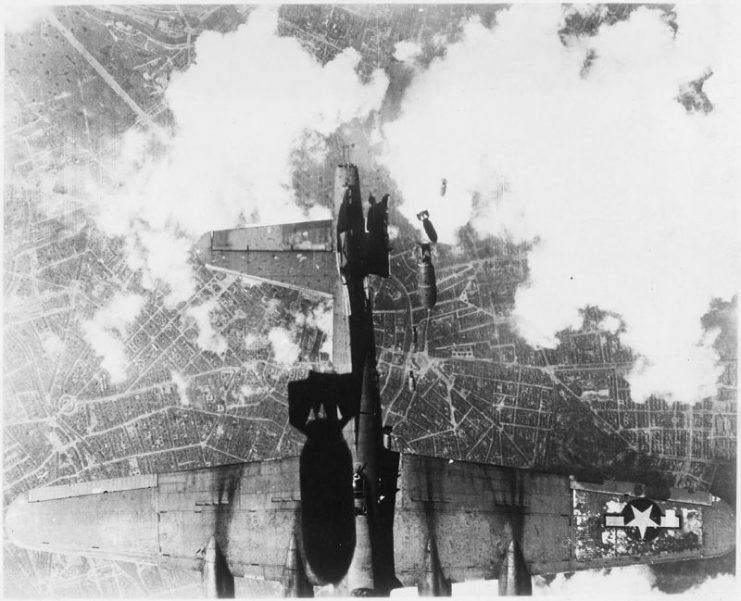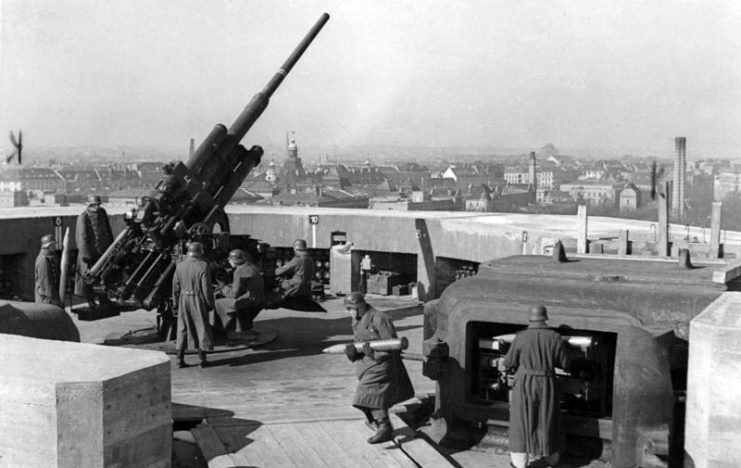Approximately 10,000 residents were evacuated from central Berlin on Friday after an unexploded bomb from World War II was discovered at a construction site.
A 9,000-square-foot area in the government district was cleared while ammunitions experts defused the 1,100 British bomb.
The massive bombing campaign by the Allies at the end of WWII resulted in a vast number of unexploded bombs in the German capital. Their discovery and removal are a part of life in the city.
Most of the time, the affected area is only a few blocks in size and affect relatively few people. This particular bomb, though, was unusual due to its large size and its relative proximity to Chancellor Angela Merkel’s office and the German Parliament buildings.

Due to an increase in people buying property in Germany and the resulting increase in construction work, the number of unexploded ordnance being discovered is increasing, and the state government of Berlin believes there are still 3,000 undiscovered bombs around the city.
Authorities stated that the disposal of the bomb had gone as planned and the device was now stable.
The US Embassy issued a travel advisory which recommended that US citizens avoid the area but to remain calm. The statement indicates that the German authorities were experienced in dealing with these situations and travelers should take precautions but not be alarmed.
Traffic in the capital city at the time was chaotic as many people take Friday afternoon off. Those trying to leave found that the trains were not stopping at the central station. At one point before the disposal began, trains had stopped running entirely as a precautionary measure.
Streets around the government buildings, which also included the Federal Intelligence Service, Transport Ministry, and Hamburger Bahnhof, a modern art museum, were closed and employees were evacuated from the area.

The British and US warplanes dumped 1.4 million tons of explosives on German cities and factories in WWII. In the past year alone, experts have disposed of 33 tons of ordnance. They removed 27 tons in 2016 and 24.8 tons in 2015, according to police reports.
In total, there were 314 air raids by the Allies on Berlin, including attacks by the British Royal Air Force, the US Army Air Force, and the Soviet Red Air Force. 85 of those raids occurred in the final year of the war. In the end, between the air raids and the Soviet artillery attacks, half of all houses in Berlin were damaged and about a third were no longer inhabitable.
It is estimated that there were 40 cubic yards of rubble for every person living in Berlin. Over 6 square miles of the city was nothing but rubble.

Current estimates from German studies place the death toll at around 20,000 from the raids. This is compared to the 25,000 to 35,000 that were killed in one attack on Dresden on February 14, 1945, and the 40,000 killed in a single raid on Hamburg in 1943. The most killed in a single raid during World War II, though, was 100,000 in a firebombing of Tokyo on the 9th and 10th of March 1945.
Berlin managed to avoid a larger loss of life partly due to its location at the furthest end of Britain’s bomber range. It also benefited from superior air defense systems and effective bomb shelters.
It has been noted that the bombings of Berlin were intended to break the spirit of the civilians in the city, but they were not successful in this respect. In fact, when the Nazi government tried to evacuate all children from the city, parents protested so much that they were allowed to stay. When they tried to move all women and children from the city to rural areas, most of them moved back to the city.
